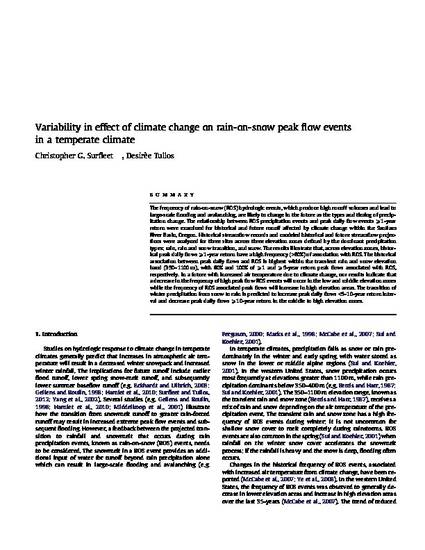
The frequency of rain-on-snow (ROS) hydrologic events, which produce high runoff volumes and lead to large-scale flooding and avalanching, are likely to change in the future as the types and timing of precipitation change. The relationship between ROS precipitation events and peak daily flow events P1-year return were examined for historical and future runoff affected by climate change within the Santiam River Basin, Oregon. Historical streamflow records and modeled historical and future streamflow projections were analyzed for three sites across three elevation zones defined by the dominant precipitation types; rain, rain and snow transition, and snow. The results illustrate that, across elevation zones, historical peak daily flows P1-year return have a high frequency (>60%) of association with ROS. The historical association between peak daily flows and ROS is highest within the transient rain and snow elevation band (350–1100 m), with 80% and 100% of P1 and P5-year return peak flows associated with ROS, respectively. In a future with increased air temperature due to climate change, our results indicate that a decrease in the frequency of high peak flow ROS events will occur in the low and middle elevation zones while the frequency of ROS associated peak flows will increase in high elevation areas. The transition of winter precipitation from snow to rain is predicted to increase peak daily flows
Available at: http://works.bepress.com/csurflee/8/
